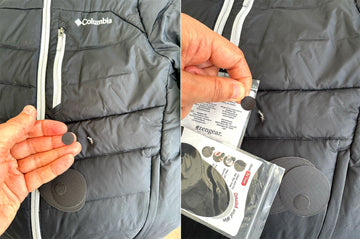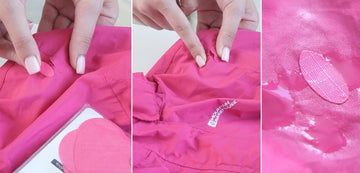Understanding Varicose Veins: Causes, Risk Factors, and Prevention
by Emily Jannet on Sep 15, 2023
Varicose veins are a common vascular condition that affects millions of people worldwide. They appear as twisted, enlarged, and often painful veins, typically in the legs and feet. While they may seem like a cosmetic concern, varicose veins can also lead to more serious health issues if left untreated. In this article, we will explore the causes of varicose veins, the risk factors associated with them, and practical steps for prevention and management.
What Are Varicose Veins?
Varicose veins are veins that have become enlarged, swollen, and twisted. They often appear bluish or purplish in color and can be seen just beneath the surface of the skin. These veins are most commonly found in the legs and feet but can occur in other parts of the body as well.
Causes of Varicose Veins
Several factors contribute to the development of varicose veins, including:
Weak or Damaged Valves: Inside your veins, there are small, one-way valves that help blood flow in the right direction—towards the heart. When these valves weaken or become damaged, they can allow blood to flow backward, pooling in the veins and causing them to swell.
Genetic Predisposition: Family history plays a significant role in your likelihood of developing varicose veins. If your parents or close relatives have them, you are at a higher risk.
Age: As we age, the natural wear and tear on our veins can weaken them, making varicose veins more likely to occur.
Gender: Women are more likely than men to develop varicose veins. Hormonal changes during pregnancy and menopause, as well as the use of birth control pills, can contribute to this increased risk.
Pregnancy: During pregnancy, the growing uterus exerts pressure on the veins in the pelvic area, which can lead to the development of varicose veins in the legs. These often improve after childbirth but may not completely disappear.
Obesity: Excess body weight places added pressure on the veins in your legs, making it more difficult for blood to flow efficiently and increasing the risk of varicose veins.
Prolonged Standing or Sitting: Jobs that require long periods of standing or sitting can hinder the circulation of blood in the legs, contributing to varicose vein development.
Lack of Physical Activity: Regular physical activity helps maintain healthy blood circulation. A sedentary lifestyle can lead to poor circulation and increase the likelihood of varicose veins.
Chronic Constipation: Straining during bowel movements can increase abdominal pressure, which may affect the blood flow in the veins of the lower body and contribute to varicose veins.
Previous Leg Injury or Blood Clots: A history of leg injury or deep vein thrombosis (DVT) can damage the veins, increasing the risk of varicose veins.
Risk Factors for Varicose Veins
Understanding the risk factors associated with varicose veins can help individuals take proactive steps to reduce their likelihood of developing this condition. Here are some key risk factors:
Age: The risk of varicose veins increases with age.
Gender: Women are more prone to varicose veins than men.
Family History: A family history of varicose veins raises your risk.
Pregnancy: Pregnancy-related changes in hormones and pressure on the veins increase the risk.
Obesity: Excess weight puts extra pressure on leg veins.
Prolonged Sitting or Standing: Jobs or lifestyles that involve extended periods of sitting or standing can increase risk.
Lack of Exercise: Physical inactivity can hinder blood flow and contribute to vein problems.
Smoking: Smoking damages blood vessels and negatively impacts circulation.
High Heels: Wearing high heels can disrupt blood flow in the legs.
Chronic Constipation: Straining during bowel movements can raise abdominal pressure and contribute to vein issues.
Prevention and Management
While some risk factors for varicose veins are beyond your control, there are several steps you can take to prevent or manage this condition:
Regular Exercise: Engage in activities that promote healthy blood circulation, such as walking, swimming, and cycling. These exercises strengthen your calf muscles, which play a crucial role in pumping blood back to the heart.
Maintain a Healthy Weight: Losing excess weight reduces the pressure on your leg veins and decreases your risk of developing varicose veins.
Avoid Prolonged Sitting or Standing: If your job requires sitting or standing for long periods, take breaks to move around and stretch your legs.
Elevate Your Legs: When you have the opportunity, elevate your legs above heart level to encourage blood flow back to the heart.
Compression Stockings: Consider wearing compression stockings, which provide gentle pressure on your legs, helping to improve circulation.
Dietary Changes: A diet rich in fiber can help prevent constipation, reducing the risk of varicose veins. Also, limit your salt intake to reduce fluid retention.
Stay Hydrated: Proper hydration keeps your blood volume up, helping to maintain blood flow.
Avoid Tight Clothing: Tight clothing, especially around the waist and legs, can impede blood flow.
Choose Comfortable Footwear: Opt for shoes that provide good support and avoid high heels for extended periods.
Consult a Specialist: If you notice any symptoms of varicose veins, such as pain, swelling, or skin changes, consult a healthcare professional for an evaluation and personalized treatment recommendations.
Conclusion
Varicose veins are a common and often bothersome vascular condition that can lead to complications if left untreated. While some risk factors, such as age and genetics, are beyond our control, taking proactive steps to maintain a healthy lifestyle can significantly reduce the risk of developing varicose veins. By staying active, managing your weight, and practicing good habits, you can protect your vascular health and enjoy a higher quality of life. If you suspect you have varicose veins or are concerned about your risk factors, consult a healthcare provider for guidance and personalized care.





